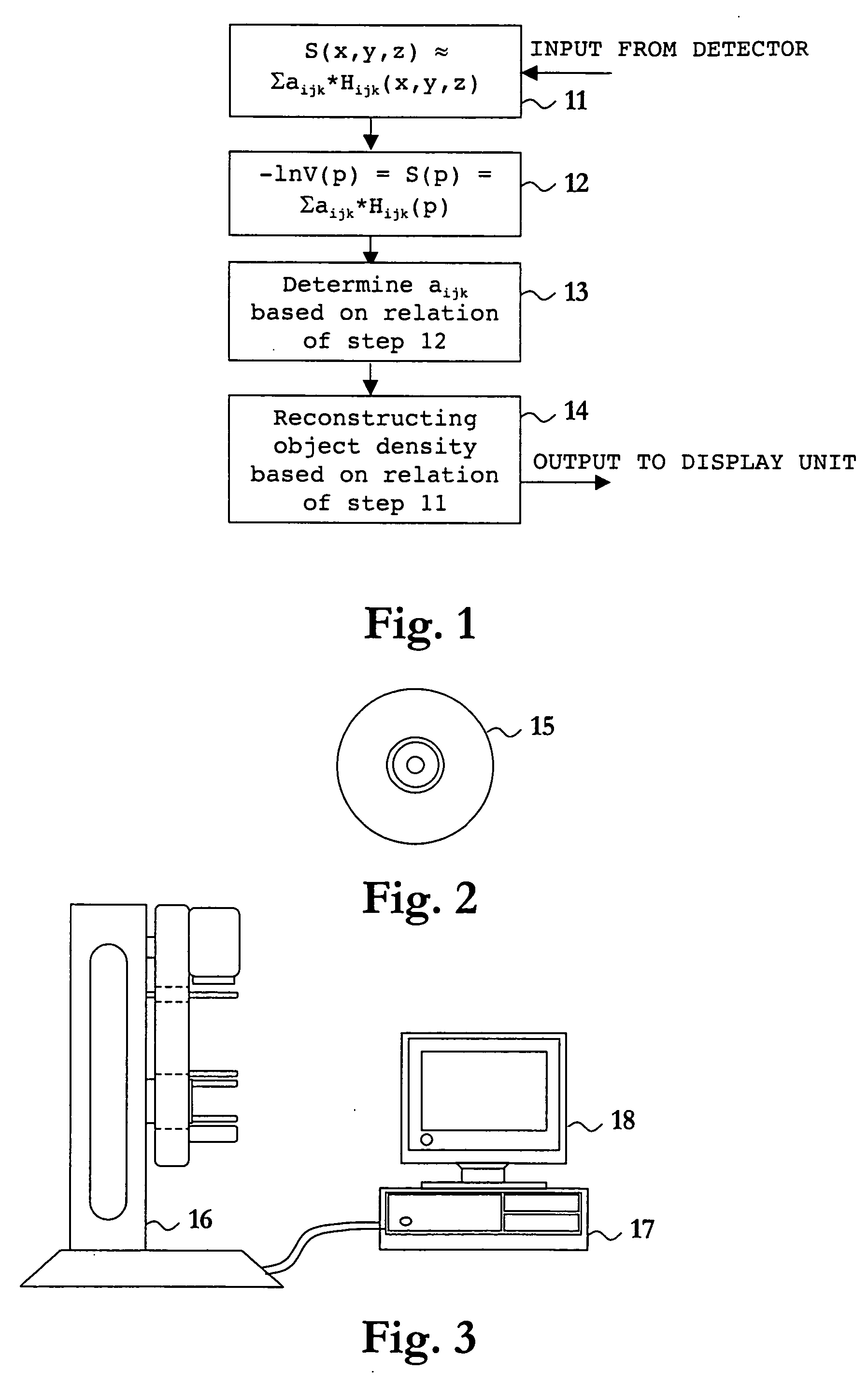Method and apparatus for reconstruction of the attenuation density of an object from x-ray projection image data
a technology of x-ray projection and image data, applied in the field of xray imaging, can solve the problems of not being solved, the number of reconstructed surfaces is strictly restricted, and the number of unknowns will exceed the number of equations, so as to achieve reliable, accurate, and the effect of reliabl
- Summary
- Abstract
- Description
- Claims
- Application Information
AI Technical Summary
Benefits of technology
Problems solved by technology
Method used
Image
Examples
Embodiment Construction
[0028] A method according to a preferred general embodiment of the present invention is disclosed below with reference to FIG. 1. The reconstruction of continuous three-dimensional unknown object attenuation density S(x,y,z) begins after having received input data of the X-ray examination method, which has been performed, such as the maximum size of the object, the number of pixel values in one or two dimensions, and the number of different angles, in which detection is performed, and naturally the X-ray projection image data values, i.e. the pixel values V(pq) at pixel point pq on image q, themselves.
[0029] Generally, a number of two-dimensional X-ray images taken at different angles provides for the reconstruction of object attenuation density in three dimensions, whereas a number of one-dimensional X-ray images taken at different angles (in the plane of the one-dimensional images) provides for the reconstruction of object attenuation density in a plane, only. The present inventi...
PUM
 Login to View More
Login to View More Abstract
Description
Claims
Application Information
 Login to View More
Login to View More - R&D
- Intellectual Property
- Life Sciences
- Materials
- Tech Scout
- Unparalleled Data Quality
- Higher Quality Content
- 60% Fewer Hallucinations
Browse by: Latest US Patents, China's latest patents, Technical Efficacy Thesaurus, Application Domain, Technology Topic, Popular Technical Reports.
© 2025 PatSnap. All rights reserved.Legal|Privacy policy|Modern Slavery Act Transparency Statement|Sitemap|About US| Contact US: help@patsnap.com


